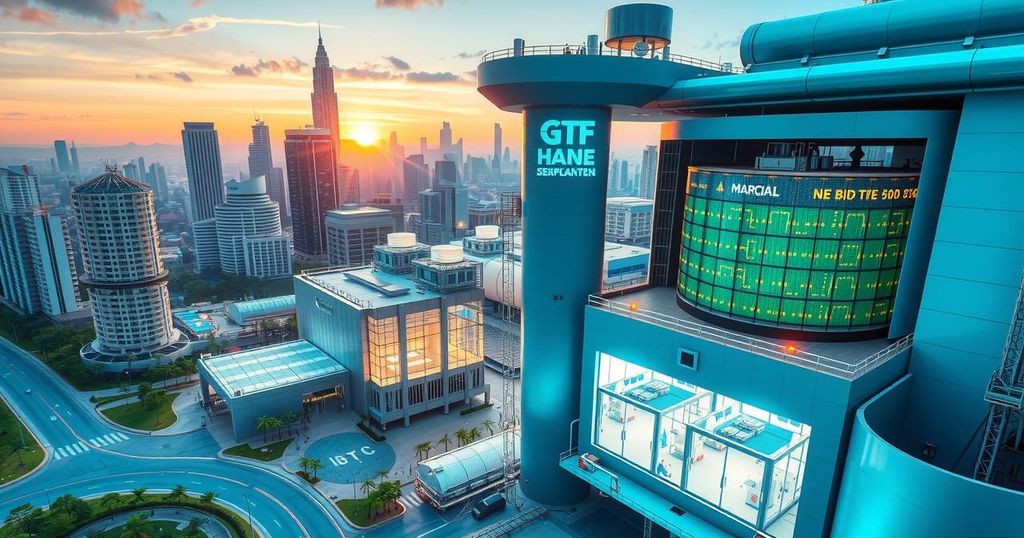Malaysia’s Ambitious Gamble on Semiconductors: Investing in a Tech Future
Malaysia is launching an ambitious National Semiconductor Strategy to attract over $107 billion in investments, shifting from back-end assembly processes to advanced semiconductor technologies. The government is focused on developing local talent, fostering homegrown companies, and building a sustainable competitive edge through strategic partnerships while leveraging its geographical position and political neutrality.
Malaysia is making a significant move to establish itself as a crucial player in the global semiconductor supply chain. This initiative, led by Prime Minister Anwar Ibrahim, is anchored in the National Semiconductor Strategy (NSS), which was unveiled in May 2024. The goal is ambitious—seeking to draw over MYR500 billion (approximately $107 billion) in investments from both public and private sectors to realize the country’s chip-making aspirations, as reported by Reuters.
For a long time, Malaysia has been primarily recognized for its role in back-end semiconductor processes, like assembly and testing. Major companies such as Intel and Infineon have operated successfully in the region due to its stable infrastructure and skilled workforce. However, the NSS represents a pivot towards more advanced sectors of the semiconductor industry, emphasizing chip design, advanced packaging, and research and development, according to ASEAN Briefing.
This strategic change is not just local; it reflects a broader global trend among tech nations striving to secure semiconductor capabilities amid increasing geopolitical tensions. As highlighted by The Diplomat, Malaysia’s position of neutrality in the fraught U.S.-China relations uniquely positions it as an attractive destination for companies looking to diversify their production bases away from Taiwan and mainland China.
Investment incentives are central to the NSS. The government has promised MYR25 billion (roughly $5.3 billion) in various incentives, which encompass tax breaks, grants, matching investments, and support for land and infrastructure improvements. As reported in Free Malaysia Today, the Malaysian Investment Development Authority (MIDA) is actively courting major semiconductor firms from the U.S., Europe, and Japan. Examples of early success include Intel’s $7 billion expansion in Penang and Infineon’s commitment of €5 billion for power semiconductor capacity in Kulim, as noted by TIME.
Moreover, Malaysia recognizes that attracting investment is only part of the equation; talent development is equally critical. Under the NSS, an initiative aims to train and upskill 60,000 Malaysian engineers for the demands of modern semiconductor manufacturing, as reported by Malay Mail. This initiative includes revamping university curricula and creating public-private partnerships with companies like ARM and Synopsys to provide practical training.
To prevent a bottleneck in talent, the Ministry of Higher Education is promoting “dual-training systems,” which merge classroom learning with practical factory experience. KR Asia notes that this effort aims not only to fill current skill gaps but also to retain talent by offering competitive salaries for top engineers.
The NSS also aspires to cultivate local champions within the industry. The goal is to develop at least ten homegrown companies specializing in advanced packaging and integrated circuit design, each projected to generate between MYR1 billion and MYR4.7 billion (approximately $210 million to $1 billion) in revenue by 2030. Khazanah Nasional is among the government-linked investors creating funding pools to back these deep tech startups, and there is also a focus on leveraging university R&D, as reported by Digital News Asia.
Malaysia’s strategic geographic position and its political neutrality further enhance its appeal for semiconductor companies looking to invest. Boasting robust infrastructure, competitive energy rates, and efficient logistics, especially in Penang, Johor, and Sabah, the country is well-equipped to meet the demands of a sector that thrives on rapid market entry. The Diplomat underscores that Malaysia’s active participation in regional trade agreements also bolsters its attractiveness as a semiconductor hub.
Rather than trying to outpace competitors like Taiwan or South Korea, Malaysia’s NSS promotes a collaborative approach. Initiatives for cross-border R&D and inviting foreign entities to co-invest in innovation parks are already underway. Collaborative ventures with nations such as Japan, Vietnam, and Singapore aim to build integrated regional supply chains, as reported by Free Malaysia Today.
In tandem, Malaysia’s commitment to environmentally sustainable manufacturing practices is significant. The semiconductor industry is making strides towards ESG-aligned processes, which includes the integration of renewable energy and carbon-tracking technologies in manufacturing, a trend that resonates with sustainability-focused tech firms, as observed by TIME.
Facing considerable competition from entrenched semiconductor powerhouses and rising challengers like India and Vietnam, Malaysia’s focused strategy under the NSS positions it strategically in the sector. The country’s success will hinge on the government’s ability to bolster talent development efforts, sustain investor interest, and rapidly advance domestic innovation. As Malaysia invests heavily in semiconductors, it is not just about factories and engineers—it is a bold step towards achieving technological sovereignty in an increasingly competitive global landscape.
Malaysia’s National Semiconductor Strategy is a well-structured plan aiming for substantial investment in the country’s semiconductor industry. By shifting focus from traditional assembly roles to advanced technology, training local talent, and fostering homegrown companies, Malaysia seeks to redefine its position in the global supply chain. The government’s efforts, alongside its strategic neutrality and collaboration with international partners, could propel Malaysia into a significant player in the semiconductor arena if executed effectively.
Original Source: www.intellinews.com




Post Comment